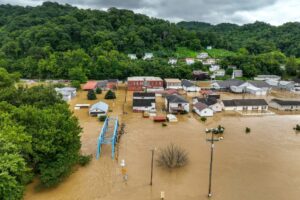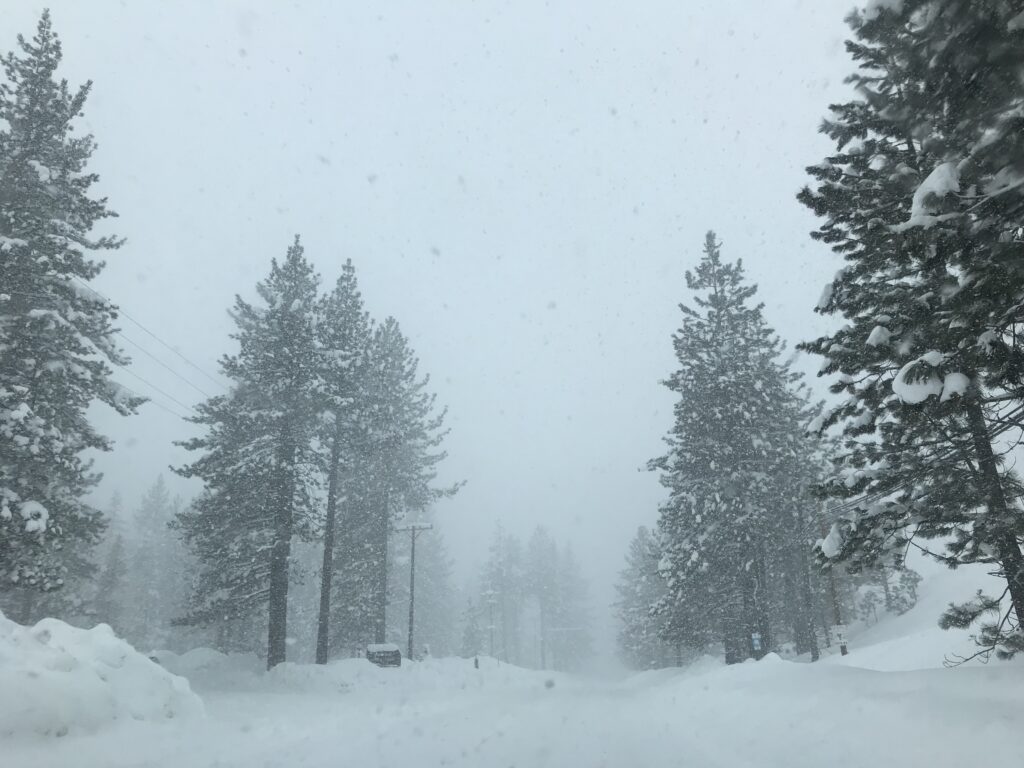
The Frontlines of the Environmental Justice Movement: Kentucky Flood 2022
This year, more intense and frequent natural disasters have fully exposed the reality of a present and dangerous global climate crisis.

Winter Storm by Sam Cristol
In Erie County, New York, Jay Withey broke into EDGE Academy to escape a blizzard totaling 50 inches of snow. During his search for safety, he brought around twenty people and two dogs trapped in the terrible cold front of the 2022-2023 winter to safety. The National Oceanic and Atmospheric Administration (NOAA) announced that the average temperature in the contiguous United States in the summer of 2022 was 2.5 degrees above average. The hottest U.S. summer on record for the past 128 years happened in 2021, when the average temperature was 74 F. If temperatures rise globally, why are some regions experiencing such brutal winters?
The reason is that, as winters become shorter and warmer, snowstorms and blizzards have actually become harsher. National Geographic explains that warmer temperatures lead to a warmer atmosphere, and warmer atmospheres hold more moisture, causing an increase in precipitation, either as rain or snow. The more moisture in the air, the more intense the precipitation, i.e. heavier rain or snow.
But that only accounts for a fraction of the problem. The Arctic polar vortex is a band of winds in the stratosphere that, when stable, remain areally contained. However, due to climate change, the Arctic polar vortex has become unstable and split, causing the cold air to move to the South. This accounts for the strong winds and colder weather in other regions.
The terms “global warming”, “climate change”, “weather”, and “climate” are often used interchangeably, but each term has its definition. Global warming is used to describe the long-term heating taking place on the Earth’s surface. Climate change is used to describe large-scale changes in weather patterns. These terms are not interchangeable; rather, global warming is only a part of climate change. Similarly, weather refers to local atmospheric conditions that occur over short periods, whereas climate refers to the long-term average temperature of a region; this would be humidity and rainfall patterns over seasons, years, or decades.
Heat waves, floods, hurricanes, and snowstorms may differ from one another, but all worsen due to climate change. As the Earth’s temperature rises, natural disasters and weather events become more severe and threaten lives, habitats, and homes.
1
Paget, S., & Wolfe, E. (2022, December 30). ‘I had to do it to save everyone’: Man breaks into school and shelters more than 20 people from blizzard. CNN. Retrieved January 16, 2023, from https://www.cnn.com/2022/12/30/us/blizzard-new-york-rescue-school-break-in/index.html
2
Whitt, K. K. (2022, September 11). 2022 was 3rd hottest summer in US. EarthSky. Retrieved January 16, 2023, from https://earthsky.org/earth/2022-3rd-hottest-summer-united-states/
3
Flood, J. (2022, June 2). Maybe It’s Cold Outside. National Geographic Society. Retrieved January 17, 2023, from https://education.nationalgeographic.org/resource/maybe-its-cold-outside
4
Global Warming vs. Climate Change | Facts – Climate Change: Vital Signs of the Planet. (n.d.). NASA Climate Change. Retrieved January 17, 2023, from https://climate.nasa.gov/global-warming-vs-climate-change/
Writer: A’lycia Headley A’lycia Headley (she/her)
LinkedIn: www.linkedin.com/in/alycia-headley
A’lycia Headley is a Florida International University graduate with a degree in Liberal Arts and Sciences, with a focus in Law Business and Society, with a Minor in Business. During undergrad, she worked with local city officials to aid in developing homeless transition programs; her research areas emphasized governance, community collations, and sustainability. She is passionate about an equitable and sustainable community.
Editor: Alyssa Yu (she/her), EIT
https://www.linkedin.com/in/alyssa-yu-08257b78/
Alyssa Yu is an environmental engineer in Los Angeles, where her field practice focuses on planning, designing, and constructing green stormwater infrastructure. She received her undergraduate degree in Civil and Environmental Engineering from UC Berkeley, where she and her friends also started an environmental justice student organization called Socially Engaged Engineers (SEE), with a mission to start conversations among students and professionals about the deep-rooted interconnectedness of engineering with sociopolitical issues. Alyssa is most passionate about implementing natural water treatment systems and other ways to make clean water accessible through smarter, sustainable, and more equitable practices.

This year, more intense and frequent natural disasters have fully exposed the reality of a present and dangerous global climate crisis.

I threw the car in gear, racing through sheets of rain back to the music festival. I had left my friends asleep in their tents to attend a family wedding, and in my absence, Hurricane Matthew had descended.
